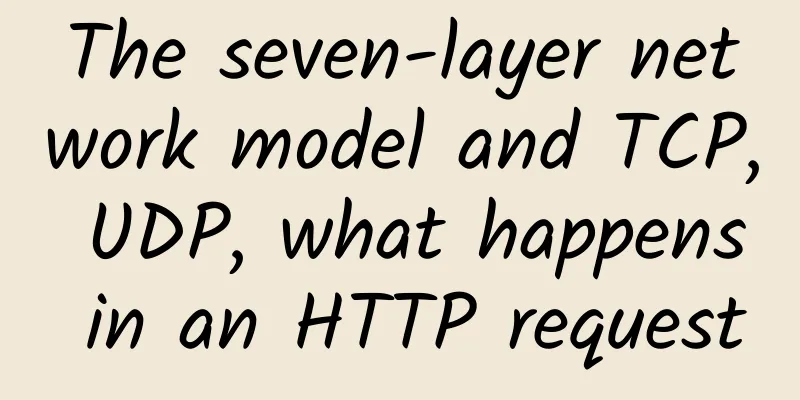IPv4 addresses are exhausted. Let’s discuss IPv6 penetration and IP migration complexity.

|
As a basic resource, IPv4 has supported the development and growth of the global Internet over the past two decades, enabling the interconnection of millions of enterprises and billions of people, and generating trillions of economic value. As of 2011, there are no more IPv4 addresses available in the world (IPv4 can only provide 4.3 billion addresses, and there is less than one IP address per person for the world's 6 billion people). As the next version of IPv4, IPv6 has attracted the attention of the industry with its huge address space, good security, and flexible usage, and has also begun to steadily enter the stage of communication history. As more and more hardware needs to be connected to the Internet, such as computers, mobile phones, TVs, wearable devices, cars, refrigerators, air conditioners, etc., the original IPv4, which had less than one IP address per person, can no longer meet the demand. As early as 2009, global operators had foreseen that IPv4 addresses would soon run out and could not support the rapid development of the telecommunications industry in the future. For example, France Telecom, Deutsche Telekom, Electrek Malta, Comcast and China Telecom have successively launched IPv6 pilot projects. In the IT industry, well-known websites such as Google and Yahoo have successively announced the release of permanent IPv6 domain names to make full preparations for the advent of the IPv6 era. It is inevitable that IPv6 will replace IPv4, but this process is a gradual process. For a long time, the two IP formats will coexist until IPv4 is no longer needed. Google has published the application of IPv6 on its website, hoping to provide some help for network service providers and website operators when migrating to IPv6. Google collects global IPv6 usage data through its website visits. From the chart, we can see that the adoption rate of IPv6 has been showing a steady growth trend from 2012 to 2017. From 0.64% in June 2012 to 16.74% in March 2017, it has increased 25 times. The following figure shows the IPv6 adoption rate of various countries through a world map. The green part in the figure represents the countries that have deployed IPv6, and the darker the color, the greater the deployment rate. The red part indicates that IPv6 has not been deployed or that although IPv6 has been deployed, there are serious stability and popularization delay issues. The country with the highest IPv6 adoption rate is Belgium, at 51.65%. The United States is next, with an adoption rate of 35.2%. Greece and Germany are next, with adoption rates of 32.38% and 30.85%, respectively. India and Brazil are also countries with relatively high adoption rates, at 22.42% and 20.29%, respectively. The adoption rates of other countries are mostly above 10%, such as Australia, France, the United Kingdom, Japan, New Zealand, Finland, Malaysia, etc., and are mostly between 11% and 19%. There are also some countries with adoption rates below 10%, such as Vietnam, Thailand, South Korea, Argentina, etc. China's IPv6 adoption rate is only 1.2%. Because China has a large population base and a large number of Internet users, the migration speed will be relatively slow, and the corresponding rate will be relatively low. In addition, due to network access restrictions, many Chinese Internet users may not be able to directly access Google, resulting in Google being unable to collect these data. Technically speaking, IPv6 addresses and IPv4 addresses have different protocol formats and characteristics, so the planning process is different. Localities also need to carry out corresponding planning based on the address allocation rules of enterprise organizations. In the overall planning of IPv4 to IPv6 migration, try to refer to the current network design, and try to match the IPv6 address planning with the current IPv4 network design to reduce risks. The purpose of network IPv6 evolution is to build IPv6 capabilities on the existing network architecture and solve the current network service development problems. Therefore, it is necessary to distinguish scenarios and adopt different evolution strategies. In the process of formulating development ideas, the investment returns and technical risks brought by the following factors must be considered.
In the overall planning, the requirements for security, scalability and routing aggregation should be unified. To provide a basis for the efficient use of IPv6 addresses in the future, the most important thing in IPv6 address planning is IPv6 prefix planning.
We know that the IPv6 evolution process needs to fully consider the impact on the network, services, and users, and reduce the transformation cost. In order to achieve the above ideas, the following principles need to be followed during the evolution process. 1. Consider the entire network, from easy to difficult principle: In the early stage of IPv6 evolution, in order to gradually accumulate IPv6 evolution experience and reduce the risks in the evolution process, it is necessary to consider the evolution process end-to-end with IP addresses as the main line, business development and network conditions as the core. In the process of network evolution, given that the closer to the user, the more complex the business, the greater the difficulty of IPv6 transformation, it is necessary to carry out network IPv6 evolution from top to bottom in the metropolitan area network, and realize IPv6 technology transformation from easy to difficult, so as to reduce the technical risks in deployment. 2. Deploy on demand and follow the principle of gradual transformation: Whether it is dividing the evolution scenarios, focusing on the user scenarios, or considering the network, business, user and cost factors in the evolution, it is all for the purpose of carrying out deployment and transformation on demand to maximize the investment effect and minimize the deployment risk. In the process of IPv6 evolution, in order to accumulate experience, control the technical risks in the evolution process and develop IPv6 services, it is necessary to follow the principle of gradual transformation and reduce the cost in the process of evolving to IPv6. 3. Reduce the impact and smooth evolution principle: IPv6 evolution is currently a medium- to long-term process with multiple technologies coexisting. The deployment and application of multiple network technologies in the existing network not only brings new technologies but also introduces technical risks. Therefore, it is necessary to evaluate and grasp the impact of new technologies on existing network services during the entire evolution process. In this process, it is necessary to avoid the impact of technology migration on user experience and perception. Therefore, in the process of evolving to IPv6, the ability to smoothly switch transition technologies is required, which also meets the requirements of maximizing investment effects and minimizing deployment risks. |
<<: IPv4 history ends, IPv6 era officially arrives
>>: Huawei Mate X is a new species. You think foldable phones are simple!
Recommend
Communications man, what on earth have you done to Everest?
Do you still remember the 5G "cloud supervis...
There are about 180 million users of 5G packages using 4G terminals
Recently, the net increase in 5G package users of...
Rather than calling it a skill, it is better to call it a history of blood and tears. Do you really know how to choose a router?
Whenever I am praised for my shopping skills, I c...
5G meets WiFi on a narrow road, walking hand in hand in a friendly way
Recently, both domestic and foreign operators hav...
RAKsmart San Jose high-defense servers start from $79/month, Japan/Korea servers start from $79/month
Yesterday we shared the RAKsmart New Year's b...
Operators' user development under severe cold weather, some are happy while others are sad
It is time for operators to release their monthly...
OneTechCloud: 20% off on all VPS, Hong Kong CN2, Japan CN2, US CN2 GIA, high-security VPS, native IP
OneTechCloud (Yikeyun) offers a minimum 20% disco...
The property management company asked for 300,000 yuan as an “entry fee” for 5G to enter the residential area. The real problem is the problems beyond technology.
The 5G waves are rising higher and higher. In ear...
Shanghai Pudong issued the country's first "blockchain construction standard" in the government sector
Recently, the Pudong New Area's "Governm...
A brief analysis of Web real-time communication technology!
Web-based instant messaging The server can immedi...
At Huawei's annual report conference, Xu Zhijun said that "the US government is destroying the global technology ecosystem"
On March 31, Huawei released its 2019 annual repo...
80VPS: Hong Kong dedicated server starting from 350 yuan/month, optional IID/Cloudie/Kowloon/Shatin/CTG/CN2/large bandwidth/high defense, etc.
Last month we shared information about VPS hosts ...
Seven factors to consider in network redundancy design
[[433681]] 【51CTO.com Quick Translation】 When a n...
H3C iMC leads the Chinese network management software market for three consecutive years
Recently, International Data Corporation (IDC) re...
Tencent Cloud offers a 40% discount on domain name renewals, com renewals for 39 yuan, cn renewals for 21 yuan
Friends who have domain names in Tencent Cloud ca...









